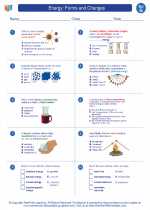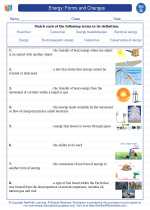Exothermic Reactions
An exothermic reaction is a chemical reaction that releases energy in the form of heat. During an exothermic reaction, the overall energy of the reactants is higher than the overall energy of the products. This means that energy is being released from the system into the surroundings. Exothermic reactions are often accompanied by an increase in temperature and can be observed in a variety of everyday processes, such as combustion, neutralization reactions, and some types of decay processes.
Characteristics of Exothermic Reactions:
- Release of heat energy
- Temperature increase in the surroundings
- Negative change in enthalpy (ΔH < 0)
- Products have lower energy than the reactants
Examples of Exothermic Reactions:
1. Combustion of fuels such as burning wood, gasoline, or natural gas
2. Neutralization reactions, such as the reaction between acids and bases to form water and a salt
3. Some types of decomposition reactions, such as the breakdown of hydrogen peroxide into water and oxygen gas
Study Guide:
When studying exothermic reactions, it's important to understand the changes in energy, the characteristics of exothermic reactions, and to be able to identify examples of exothermic processes. Here are some key points to focus on:
- Define exothermic reactions and explain how they differ from endothermic reactions.
- Understand the concept of enthalpy and its relationship to exothermic reactions.
- Be able to identify exothermic reactions based on their characteristics and the change in energy.
- Study specific examples of exothermic reactions and their relevance in everyday life.
- Practice solving problems related to exothermic reactions, such as calculating the change in enthalpy for a given reaction.
By mastering these concepts and examples, you'll have a strong understanding of exothermic reactions and their significance in the field of chemistry.
.◂Science Worksheets and Study Guides Seventh Grade. Energy: Forms and Changes

 Worksheet/Answer key
Worksheet/Answer key
 Worksheet/Answer key
Worksheet/Answer key
 Vocabulary/Answer key
Vocabulary/Answer key
 Vocabulary/Answer key
Vocabulary/Answer key
 Vocabulary/Answer key
Vocabulary/Answer key
